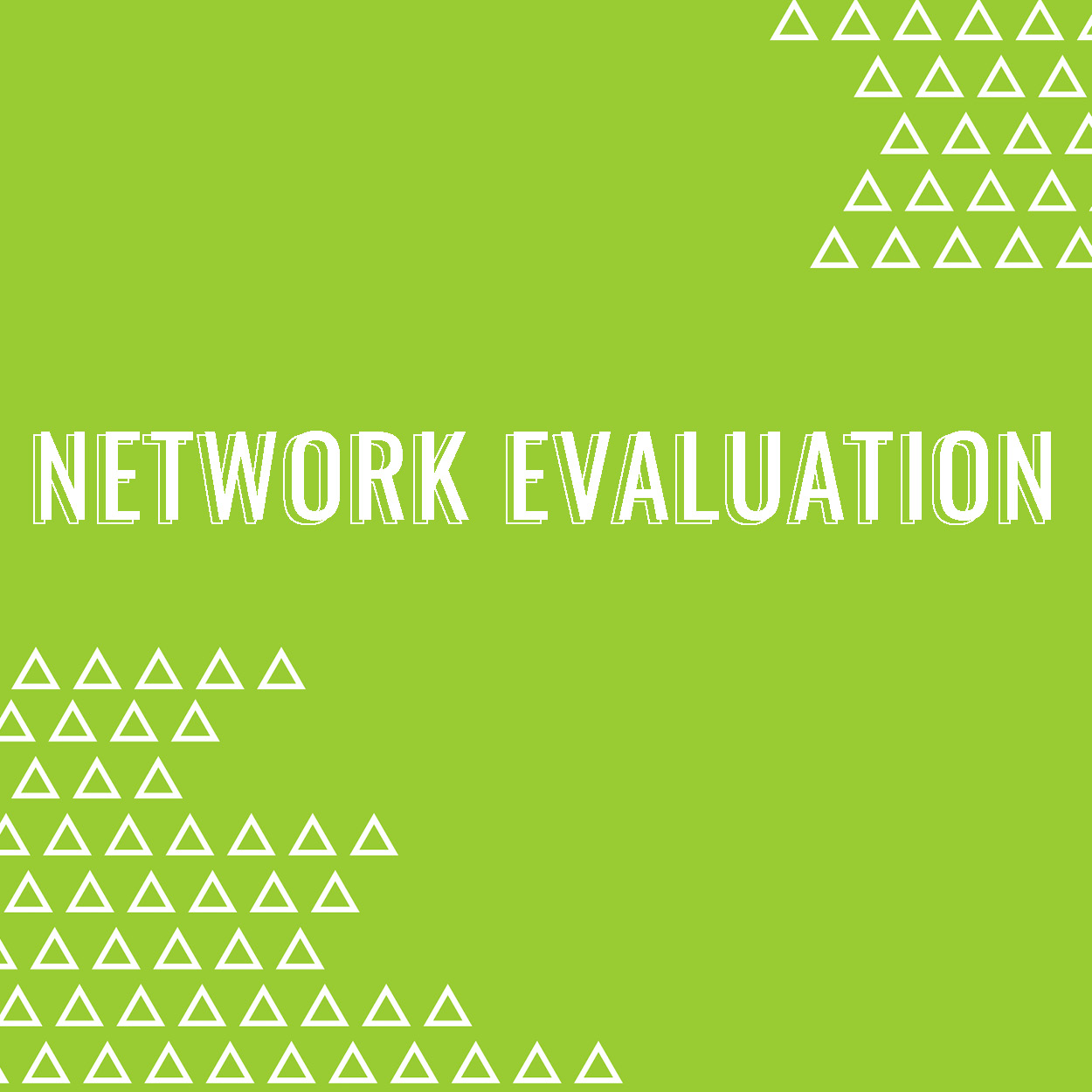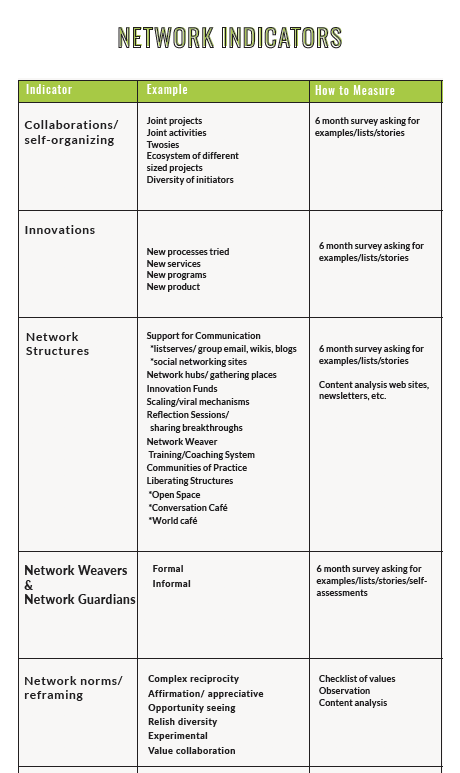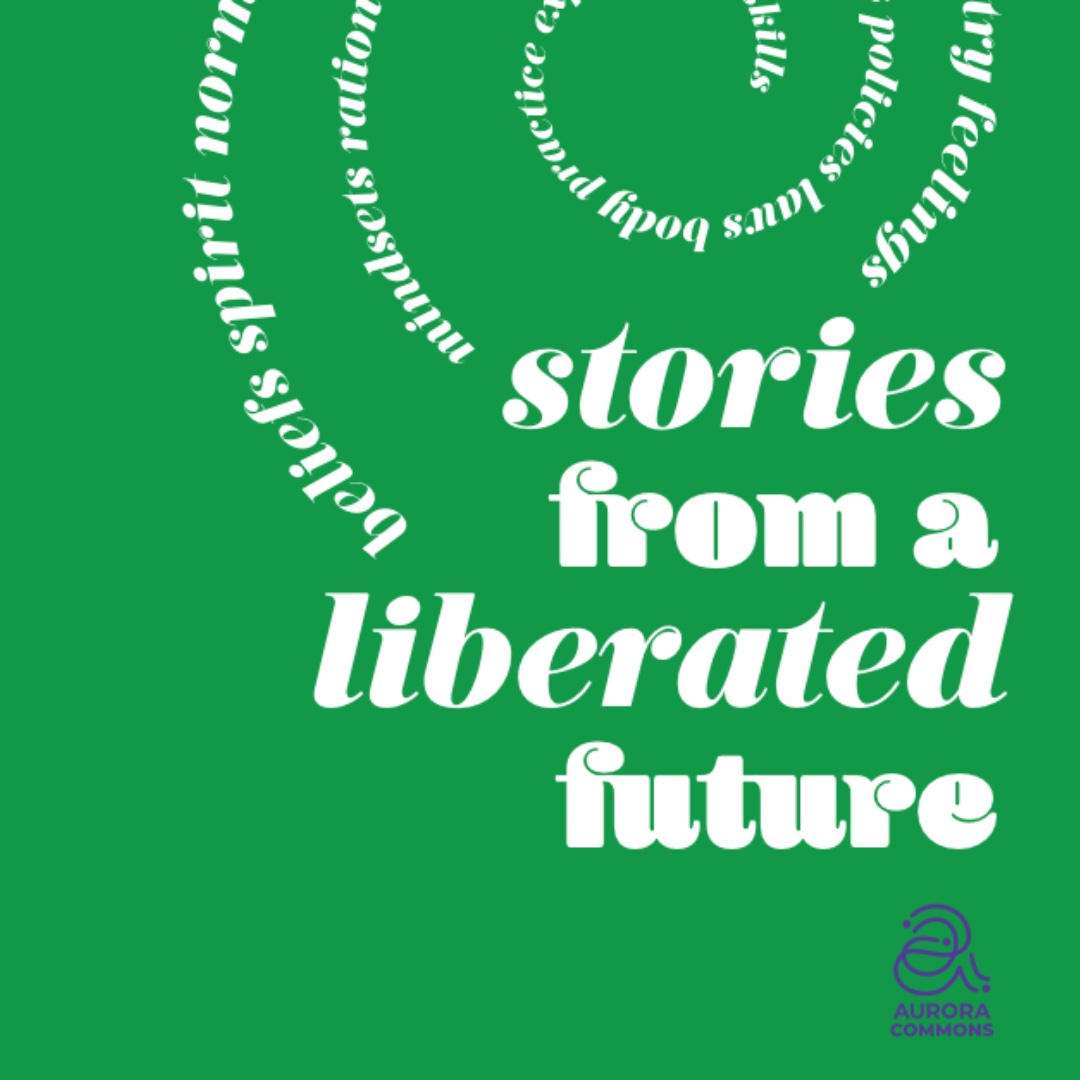
A guide to assist in assessing the value of networks
by June Holley
In complex settings, causality is also complex. We cannot identify a single action that will produce the outcomes we want. We often have to experiment, trying out a number of actions or strategies and then notice what about those exploratory forays worked
In the process of examining or reflecting on what we did, we often make breakthroughs in our thinking about the situation or problem and this helps us move to more effective actions
For example, in combating infections in a hospital, we notice that when housekeeping staff work closely with – and are respected by – nursing staff and doctors, the resulting preventative actions are more innovative and effective. This insight leads us to become more inclusive in other aspects of our work, making sure that staff from many different roles work together on solutions. As a result, our hospital becomes a better place for both patients and staff. Complexity theorists use the term emergence to describe such new ways of operating that arise from this combination of self-organized experiments and reflection
Of course, complex causality makes it difficult to determine whether a particular organization’s strategy is working or making a difference. And, in response to the complexity of problems, organizations in many communities have begun to work in networks so that they can utilize their differences to be more innovative and experimental and so they can access the power of scale, aggregation and diffusionA critical question then becomes: How do we determine the value of these networks? How are they contributing (or not) to the solution of problems? How can we tell if these networks are worth our investment?




